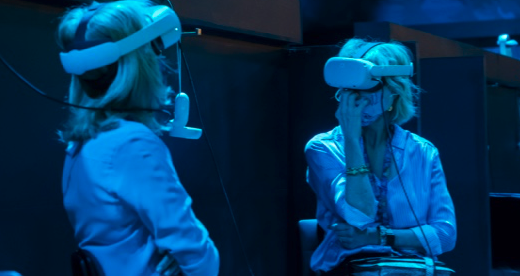In 1984 in Moscow, Alexey Pajitnov, a computer engineer, invented the first version of the game Tetris. The goal of the game is simple; rotate and drop falling blocks (called Tetriminos) into place to create rows. Despite the game’s simplicity, it has proven psychological benefits.

Jeffrey Goldsmith in This Is Your Brain on Tetris (1984) has written on such effects; he describes to see geometric shapes as he lay in the dark and when it was light he would use his imagination to stack trees, car and people into similar blocks. Goldsmith wonders if the game is a pharmatronic; an electronic drug, after which the article mentions a quote by Tetris’ designer:
”For me, Tetris is some song which you sing and sing inside yourself and can’t stop.”
Alexey Pajitnov (designer of Tetris) on Wired
Hence, it’s safe to say the game is designed to be addictive; it follows a rhythm that provides a sense of satisfaction and visual pleasure. In 1991, the brains of Tetris players were scanned by Richard Haier- this was the first neurological study on the game’s effects on the brain. The study showed that as the game gets harder and faster, the brain uses less energy to make decisions, despite the excess of stimuli. The results are counterintuitive, but show the brain’s efficiency.
”In first-time users, Tetris significantly raises cerebral glucose metabolic rates (GMRs), meaning brain energy consumption soars. Yet, after four to eight weeks of daily doses, GMRs sink to normal, while performance increases seven-fold, on average. Tetris trains your brain to stop using inefficient gray matter, perhaps a key cognitive strategy for learning. In fact, the lowest final GMRs are found in the best players’ brains, the ones most efficient at dealing with Tetris’s Daedalian geometry.”
Jeffrey Goldsmith on Wired
For those who don’t play Tetris- or have never played the proper version on various Nintendo Consoles, it might be difficult to imagine Tetris’s effects on its player. When I was first introduced to the game, it seemed silly and simple due to its straightforward objective. Nevertheless I found myself hooked watching a 40 minute video of the Tetris World Championship of 2018.
After watching the whole championship, I went on to play Tetris 99 on my Nintendo Switch. The main part of the game is free to play and only requires a steady internet connection, so it was easy to get hooked. In Tetris 99, you play online against 98 other players and compete for first place. There is more to the game, but the main objective is to build steady and fast. It started as a ‘once in a while when I’m really bored’ kind of game, but soon became part of my most played games. When turning off the game and going to sleep, I would dream of blocks falling and in my head I continued playing the game. I wasn’t sure whether this was what addiction is like- or if it was just a healthy use of my brain’s full potential. So of course, I googled.
This is how I came across the Tetris Effect, which makes the thing we focused on for an extended period of time appear in our thoughts, dreams and perception, according to Practical Psychology. It was first coined by Jeffrey Goldsmith, and its relevance has carried on to today’s versions of Tetris. After the original publication, sleep researcher Robert Stickgold conducted an experiment on Tetris players’ thoughts and dreams. This proved that about two thirds of the players saw Tetriminos as they fell asleep, where their dreams carried on to feature similar shapes.
However, the blocks we see are not cognitive afterimages; they are a result of our brain and its new neural pathways which recognize patterns easily. So after this small rabbithole of research I went into, I was glad to learn my apparent obsession with the game proved to be beneficial to my brain’s development. I have carried on to use my newly acquired pathways to organize my fridge and stock it the full potential and to reorganize my bookshelf- also filled to the brim now.
I think the game’s simple goal and design has made it easier for me to get hooked to such an extent, as the general aesthetic of the game is something my brain easily recreates when I doze off to sleep. The more recent versions of the game, such as Tetris 99 and now Tetris Effects have carried on the straightforward objective. While the graphics are more aesthetically pleasing, my brain responds similarly to these versions than to the original 1984 version. This does leave me to question sometimes if the game really needs to be updated or refreshed, or if we should stick to the original nostalgia.




Very intersting to know that this is actually a proven theory! I have also had this kind of effect while playing 1010! (sort of similar to Tetris only without the stressy and quickening effect), still trying to fill the square as I was already fast asleep. It’s so interesting to recognize the effects games can have on our brain, just by having some fun and playing them. Really cool to know that they can actually be beneficial 🙂
This is so amusing because I was obsessed with playing tetris on my nintendo DS for the longest time when I was younger, and I didn’t know that dreaming about the game was a common thing! The research you did about how your GMR decreases yet the brain performance increases the more you play the game is so interesting. I personally felt like the more I played tetris and the faster blocks fell, I was able to make decision where to put the block faster than before. I almost continued playing the game without thinking.